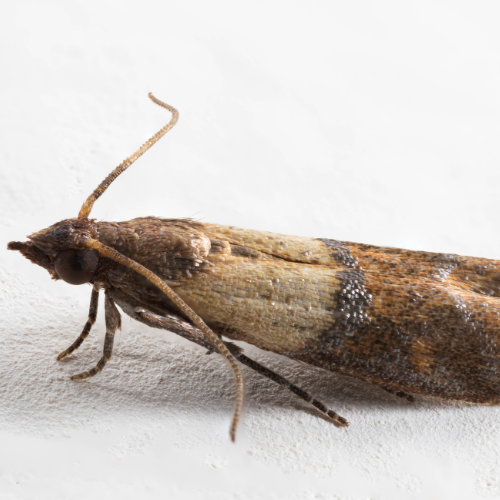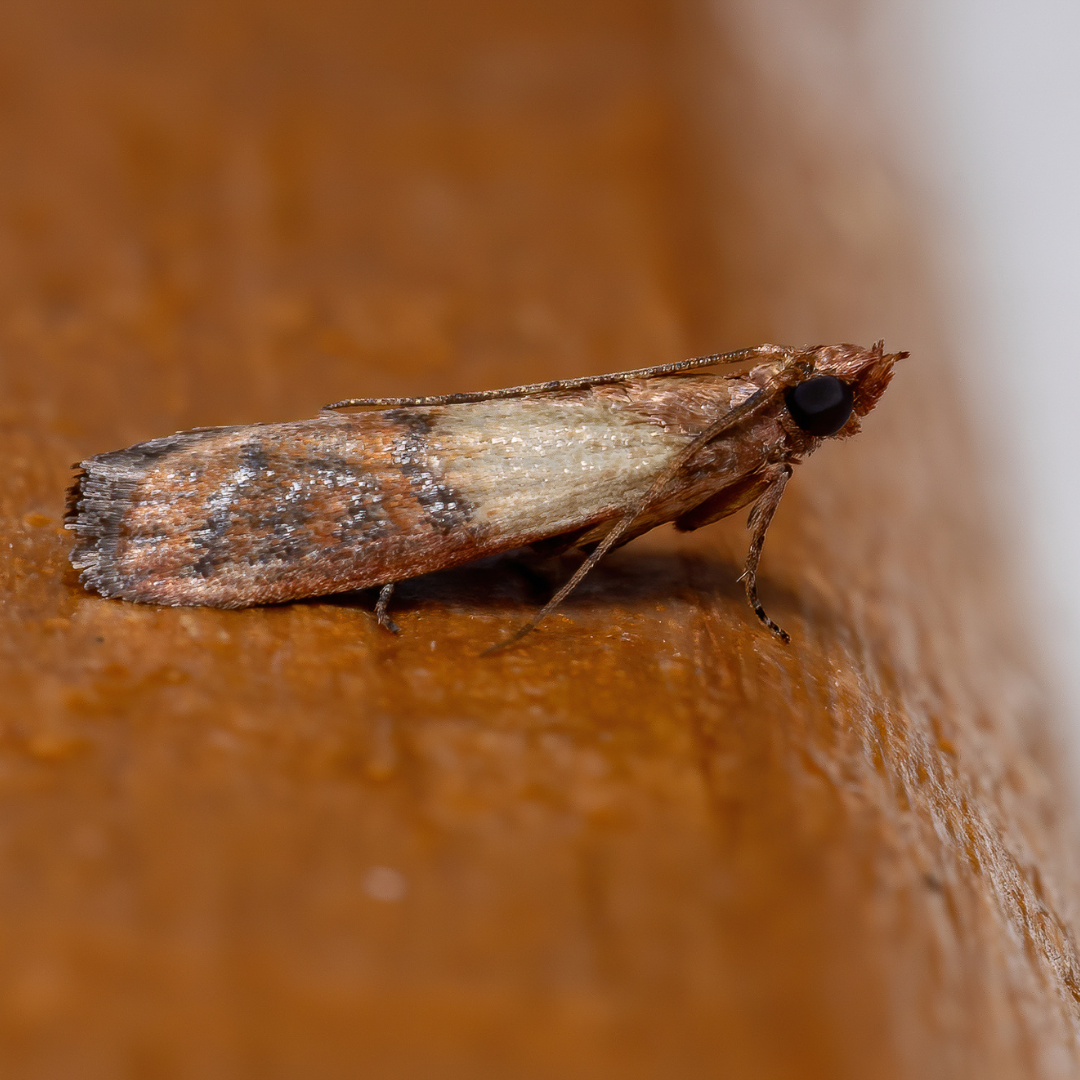Indian Meal Moth
Introduction to
Indian meal moths, scientifically known as Plodia interpunctella, are a common pest found in stored food products. These small moths can infest a variety of dry goods, including grains, cereals, nuts, and dried fruits, leading to significant contamination and food waste. Understanding how to identify, prevent, and professionally manage Indian meal moths is essential for protecting food supplies and maintaining a pest-free environment. This article explores the recognition, biology, habits, prevention, and professional handling of Indian meal moths.
Recognition
Indian meal moths are small moths with a wingspan of about 16 to 20 millimeters. Their forewings are typically reddish-brown with a distinctive coppery sheen on the outer two-thirds, while the inner third near the head is pale gray or yellowish. The larvae are off-white with shades of pink, green, or yellow and have a brown head. They grow up to 12 millimeters in length. Signs of an infestation include the presence of adult moths flying around, larvae, webbing in food products, and the characteristic frass (insect droppings) left behind in infested food.
Biology
Indian meal moths undergo complete metamorphosis, including egg, larva, pupa, and adult stages. Females lay up to 400 eggs on or near food sources. These eggs hatch into larvae, which are the primary damaging stage of the moth. The larvae feed on stored food products for several weeks, creating silk webbing as they move. After the larval stage, they pupate in cocoons, often in cracks or crevices away from the food source. Adult moths emerge from the pupae and live for about a week, during which they mate and lay eggs. The entire life cycle can be completed in about 4 to 6 weeks under optimal conditions, leading to rapid population growth.
Habits
Indian meal moths are primarily nocturnal and are most active during the evening and night. They are attracted to light and can often be seen flying around kitchens and pantries. The larvae are the most destructive stage, as they feed on a wide variety of dry goods, including grains, cereals, nuts, dried fruits, and pet food. The webbing produced by the larvae can cause food to clump together and become contaminated with frass. Indian meal moths are commonly introduced into homes and businesses through infested food products and can quickly spread if not managed promptly.
Prevention
Preventing Indian meal moth infestations involves proper food storage and regular inspections. Store dry goods in airtight, pest-proof containers made of glass, metal, or heavy plastic. Keep storage areas clean and free of food debris, and regularly inspect food packages for signs of infestation before bringing them into your home or business. Rotate food supplies to ensure older products are used first, and avoid buying food in damaged or compromised packaging. Maintain a cool, dry environment in food storage areas, as Indian meal moths thrive in warm conditions. Consider using pheromone traps to monitor for moth activity.
Professional
If you suspect an Indian meal moth infestation, professional pest control services can provide effective solutions. STL Pest Control offers comprehensive treatment plans to manage and eliminate Indian meal moth infestations. Their experienced technicians will conduct a thorough inspection to identify infested areas and apply targeted treatments to eradicate the moths. They use safe and effective methods, including insecticides and integrated pest management strategies, to ensure long-term control. Additionally, STL Pest Control provides advice on preventive measures to keep your food storage areas moth-free. Professional intervention ensures that infestations are resolved quickly and efficiently, protecting your food supplies and property.



Our Office









